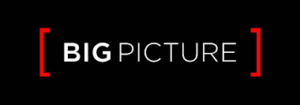1.
The search tools that I have been using to find my sources are using key words and filters to find ones that relate to what my ideas are and make sure that they are the type of sources that I am looking to use. In the case that this does not work or I do not like anything that came up, I go to one of the sources that is relevant to my idea and look through what contributed to it, look at other pieces that the author(s) worked on, and look at if it came from a bigger source and go through it if it did. In the case that I did not find a source I liked, I would try using different key words and even take a step back and look again later to see if something would catch my eye that did not the first time.
2.
I am planning to switch from discrimination among people with disabilities to discrimination against people in the LGBTQ+ community. In doing this, I hope to find sources that discuss examples and situations where people were discriminated against. I want to make sure that people who have experienced this type of discrimination and what they did in response, if anything. In order to find this I plan to start out the same way I found my article for my unit 1 expanding the canon as I explained above. I am hoping to make a point about how people being discriminated at all is unacceptable, people being discriminated against something they cannot control is cruel in every way.


